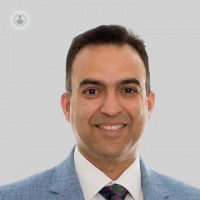Functional rhinoplasty: what is it, who needs it and recovery
Written by:Rhinoplasty procedures are often performed for purely aesthetic reasons, however, they are sometimes required to improve the functionality of the nose. When performed with this purpose, the procedure is referred to as a functional rhinoplasty. Mr Gaurav Kumar, a top consultant ENT surgeon in London, shares his expertise on this procedure.

What is functional rhinoplasty surgery?
The main function of the nose is to breathe through it comfortably. Nose surgery that is mainly focused on the function of the nose and improving its appearance is known as functional rhinoplasty. Functional rhinoplasty is also sometimes referred to as septorhinoplasty or nasal valve surgery.
Who is an ideal candidate for functional rhinoplasty?
The ideal candidates for a functional procedure are those who have issues with the external or internal nasal valve area. In some cases, the bony dorsum's (bridge’s) external deformity is pulling your septum (the cartilage which divides the nose into right and left) to one side. The most important things to keep in mind are having realistic expectations, being a non-smoker, stopping smoking during the preoperative time, and being in good health to have general anaesthesia.
What happens during functional rhinoplasty surgery?
During functional rhinoplasty, the surgeon will address all the narrow points in your nose. In most cases, the narrowest point contributing to nasal airflow is the internal nasal valve area. During the procedure, deviations of the septum are corrected by septoplasty, nasal turbinates are reduced in size, and the valve area is supported using a cartilage graft.
How long will my nose be swollen and bruised after functional rhinoplasty?
Typically, most of the swelling subsides within two weeks of a functional rhinoplasty. It also depends on how much work has been done, i.e., nasal tip work and bony framework.
How long does it take to recover fully after functional rhinoplasty?
The functional rhinoplasty procedure is typically done under general anaesthesia. Most patients are able to go home the same day with a splint on their nose, which is removed after one week. The nose may feel blocked for the first week, and you will be advised to take medications to clear the nose. It is recommended to sleep propped up to help reduce the swelling quickly. Avoid blowing your nose for the first few weeks to help minimise the risk of nose bleed.
When can I return to work after functional rhinoplasty?
You must not partake in vigorous exercise for at least eight weeks after the functional rhinoplasty procedure, however you can begin light exercise after four weeks. If working from home via a computer is an option for you, you will be able to return to work after four or five days.
If you think you may require functional rhinoplasty, or you'd like general consultation from an ENT specialist, visit Mr Kumar's Top Doctors profile to request an appointment with him.


